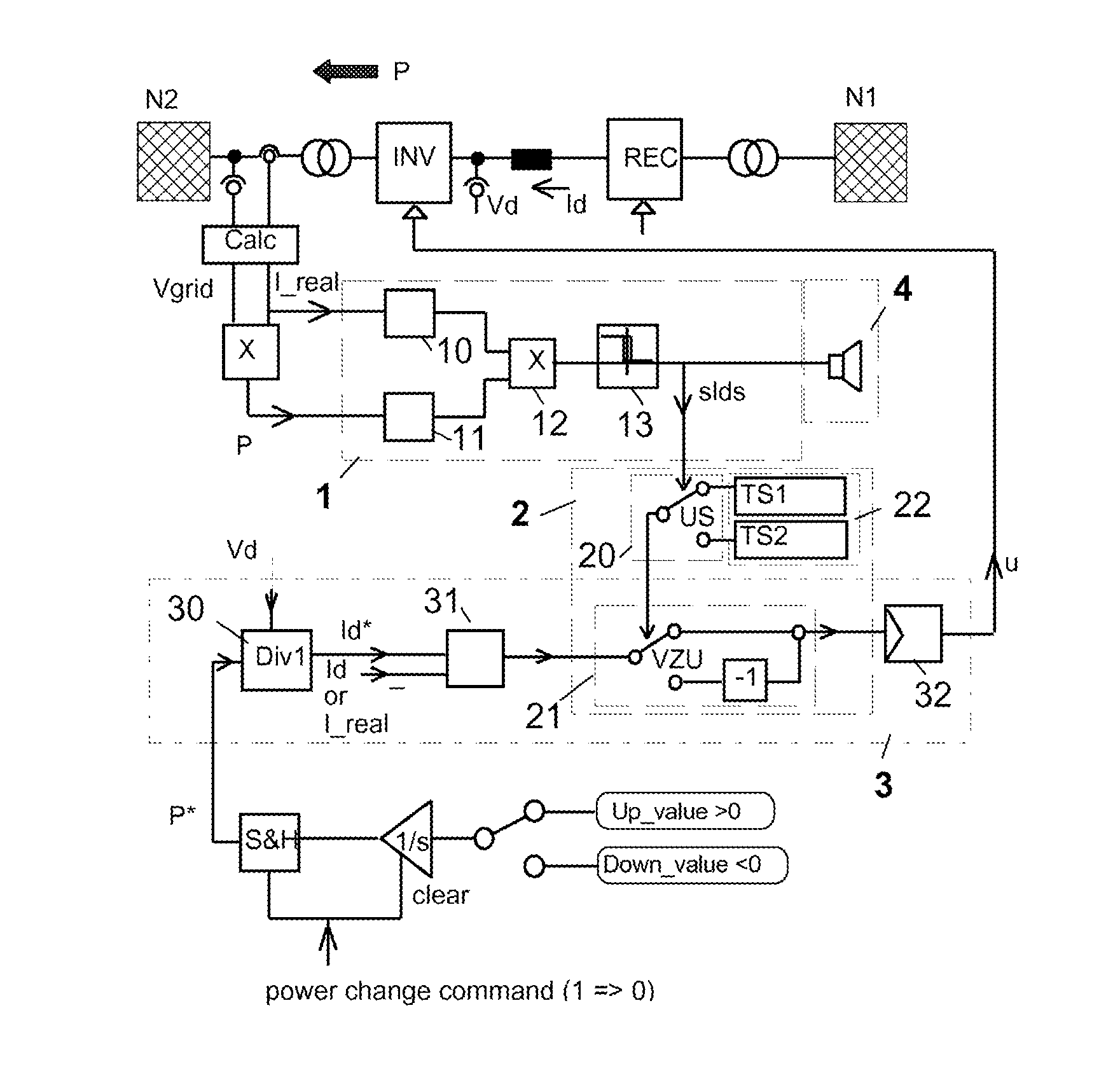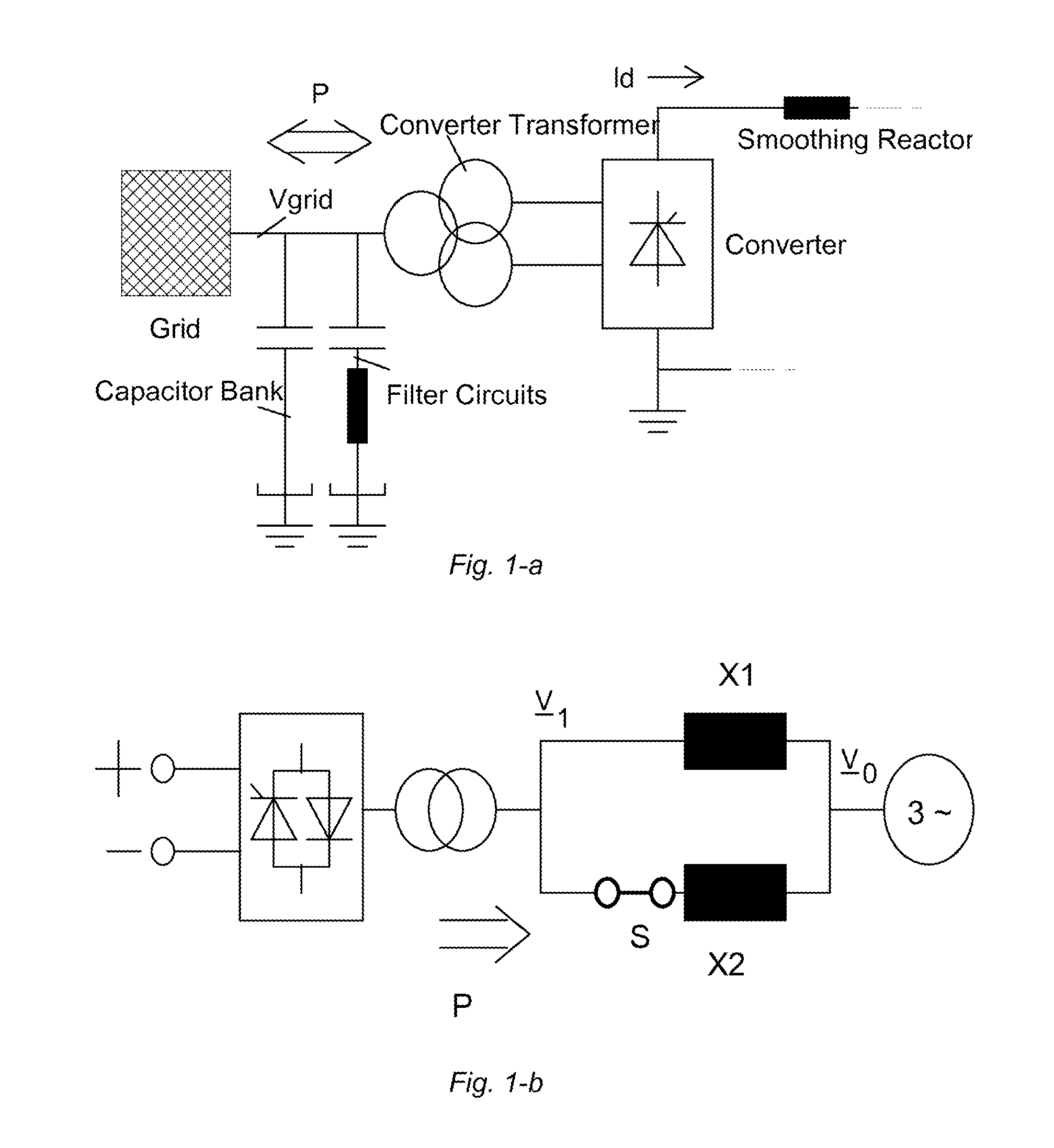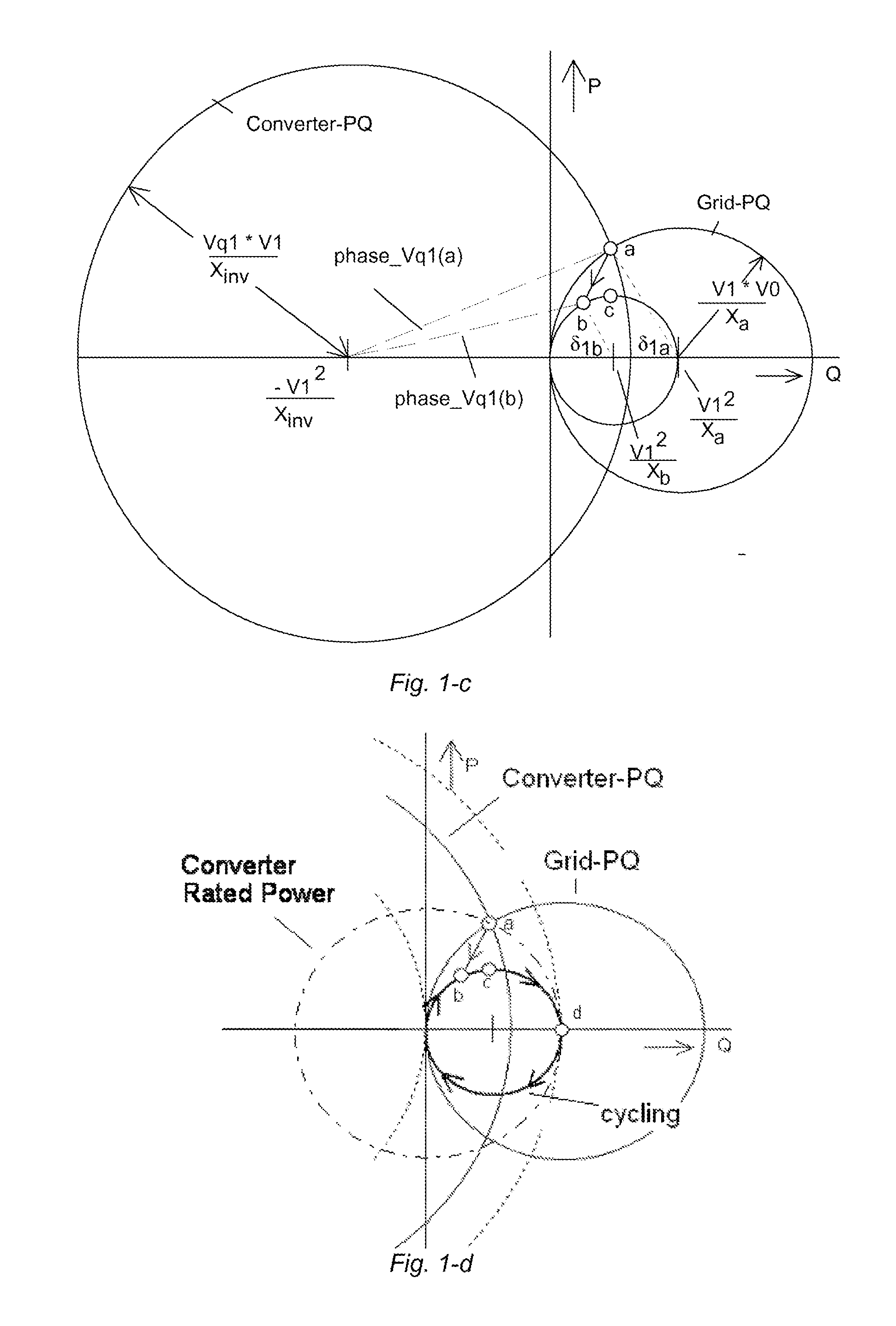Method and apparatus for automatic network stabilization in electric power supply systems using at least one converter
a technology of automatic network stabilization and electric power supply system, which is applied in the direction of power oscillation reduction/prevention, electric power transfer ac network, instruments, etc., can solve the problems of weak ac grid, impending voltage collapse, and prone to voltage instability, so as to avoid voltage and angle instability, reliable and efficient power supply system
- Summary
- Abstract
- Description
- Claims
- Application Information
AI Technical Summary
Benefits of technology
Problems solved by technology
Method used
Image
Examples
Embodiment Construction
[0101]The present invention comprises two main aspects:[0102]a) Stability analysis which runs in parallel to normal converter controls and which detects the operating status, i.e. whether the current operating point is stable or unstable and[0103]b) an automatic stabilizing control augmenting normal converter power control while using a stability limit detection signal determined through preceding stability analysis
[0104]Since the stability relevant voltage / power interrelationships for current sourced line-commutated and voltage sourced self-commutated converters are different both these devices are dealt with separately despite of common features and properties of the invention.
Line-Commutated Converter
[0105]Starting with the line-commutated converter the core idea behind the present invention relates to the fact that at minimum firing angle, resp. extinction angle, a decrease of AC voltage causes a decrease of DC voltage and a corresponding decrease of DC power. The DC current con...
PUM
 Login to View More
Login to View More Abstract
Description
Claims
Application Information
 Login to View More
Login to View More - R&D
- Intellectual Property
- Life Sciences
- Materials
- Tech Scout
- Unparalleled Data Quality
- Higher Quality Content
- 60% Fewer Hallucinations
Browse by: Latest US Patents, China's latest patents, Technical Efficacy Thesaurus, Application Domain, Technology Topic, Popular Technical Reports.
© 2025 PatSnap. All rights reserved.Legal|Privacy policy|Modern Slavery Act Transparency Statement|Sitemap|About US| Contact US: help@patsnap.com



